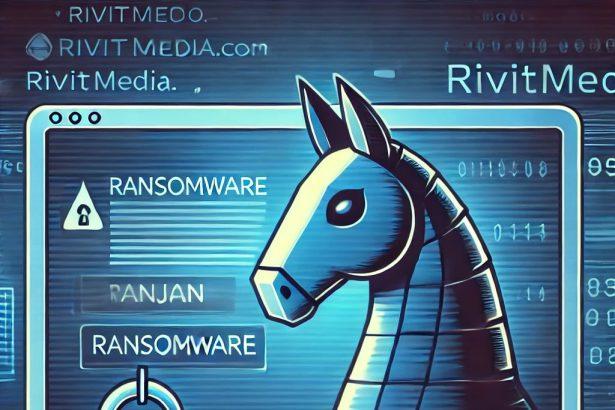Tiny FUD is a Trojan specifically targeting macOS users, designed to be Fully Undetectable (FUD) by security software. It employs various evasion techniques, such as process name manipulation, DYLD injection, and remote command execution via a command-and-control (C2) server. The malware can also capture screenshots, leading to privacy breaches and potential financial losses.
Tiny FUD Threat Summary
| Name | Tiny FUD Backdoor |
|---|---|
| Threat Type | Trojan, Mac malware, Mac virus |
| Detection Names | Avast (MacOS:SpyAgent-AC [Trj]), Combo Cleaner (Trojan.MAC.Generic.123420), ESET-NOD32 (OSX/Spy.Agent.AC), Kaspersky (HEUR:Backdoor.OSX.Agent.av) |
| Symptoms of Infection | No obvious symptoms; stealthy infection, unusual CPU activity, slow performance, unauthorized connections |
| Possible Distribution Methods | Malicious email attachments, pirated software, malicious ads, deceptive websites, software vulnerabilities, P2P networks |
| Damage | Data theft, identity theft, privacy invasion, monetary loss, system slowdowns, remote access exploitation |
| Danger Level | High |
Download SpyHunter Now & Scan Your Computer For Free!
Remove this and any other malicious threats to your system by scanning your computer with SpyHunter now! It’s FREE!
How Tiny FUD Operates
Tiny FUD is built to be completely undetectable, utilizing multiple techniques to remain stealthy while executing malicious activities. Below are its key functionalities:
Process Name Manipulation
Tiny FUD disguises its processes to appear as legitimate system processes, making it difficult for antivirus tools and system monitoring applications to identify suspicious activities.
DYLD Injection
The malware exploits the macOS Dynamic Linker (DYLD) to inject its malicious code into trusted system libraries, ensuring it runs undetected within the system.
Command-and-Control (C2) Communication
The Trojan connects to a remote C2 server, allowing cybercriminals to execute commands remotely on an infected machine. This means the attacker can:
- Steal sensitive files from the system.
- Install additional malware payloads.
- Perform keylogging or inject phishing attacks.
Screenshot Capture
Tiny FUD can take screenshots of the infected user's screen without their knowledge, capturing login credentials, banking details, personal chats, and other sensitive data.
No Visible Symptoms
Unlike some other malware that displays pop-ups or slows down systems, Tiny FUD operates silently in the background, making detection difficult.
How Did Tiny FUD Infect Your Mac?
Tiny FUD spreads through several attack vectors, including:
- Phishing Emails: Cybercriminals send emails with malicious attachments (e.g., fake invoices, PDFs, or ZIP files).
- Pirated Software: Downloading cracked software from unofficial sources often includes Trojan infections.
- Malicious Ads (Malvertising): Clicking on fake ads that lead to malware-hosting sites.
- Fake Software Updates: Users are tricked into downloading disguised malware.
- Software Vulnerabilities: Outdated macOS or third-party applications provide an entry point for infections.
- Peer-to-Peer (P2P) Networks: Torrents and file-sharing platforms are common sources of malware.
Step-by-Step Removal Guide for Tiny FUD
Download SpyHunter Now & Scan Your Computer For Free!
Remove this and any other malicious threats to your system by scanning your computer with SpyHunter now! It's FREE!
The safest way to remove Tiny FUD is by using SpyHunter, an advanced anti-malware tool designed to detect and eliminate macOS threats.
Step 1: Download and Install SpyHunter
- Download the latest version for macOS.
- Open the installer and follow the on-screen instructions.
- Once installed, launch SpyHunter.
Step 2: Run a Full System Scan
- Click on Start Scan to initiate a full system scan.
- SpyHunter will begin detecting malicious files, including Tiny FUD.
- Wait for the scan to complete and review the detected threats.
Step 3: Remove Tiny FUD
- After the scan, click on Remove Selected Items.
- SpyHunter will eliminate all malware components.
- Restart your Mac to finalize the removal.
Step 4: Manually Remove Malicious Files (Advanced Users)
If you prefer a manual approach, follow these steps:
Stop Suspicious Processes
- Open Activity Monitor (Finder > Applications > Utilities).
- Look for suspicious or unknown processes.
- Select the process and click Force Quit.
Delete Malicious Files
- Open Finder and navigate to:
/Library/Application Support/
/Library/LaunchAgents/
/Library/LaunchDaemons/- Delete any suspicious files related to Tiny FUD.
Reset Web Browsers
If the malware has hijacked your browser:
- Open Safari, Chrome, or Firefox.
- Go to Preferences > Extensions.
- Remove any suspicious extensions.
- Reset browser settings to default.
How to Prevent Future Infections
To avoid getting infected with malware like Tiny FUD, follow these security practices:
Enable macOS Security Features
- Keep macOS updated (System Settings > Software Update).
- Enable XProtect & Gatekeeper (System Settings > Privacy & Security).
Be Cautious with Emails
- Avoid clicking on unknown email attachments or links.
- Verify the sender before downloading files.
Download Software from Trusted Sources
- Always install applications from the Mac App Store or official developer websites.
- Avoid cracked software and torrents.
Use a Reliable Anti-Malware Tool
- Install SpyHunter or another reputable security solution.
- Regularly scan your system for threats.
Be Wary of Pop-Ups and Ads
- Do not click on suspicious ads or fake update prompts.
- Use an ad-blocker to reduce exposure to malvertising.
Conclusion
Tiny FUD is a stealthy macOS Trojan capable of bypassing security software, executing remote commands, and capturing sensitive data. It operates silently, making detection difficult. The best way to remove Tiny FUD is by using SpyHunter, a reliable anti-malware tool that ensures complete removal of the threat.
By following prevention strategies, such as keeping macOS updated, avoiding pirated software, and being cautious with emails, you can protect your Mac from future infections. If your Mac is compromised, follow the removal guide above to eliminate the malware and secure your device.
Download SpyHunter Now & Scan Your Computer For Free!
Remove this and any other malicious threats to your system by scanning your computer with SpyHunter now! It's FREE!




